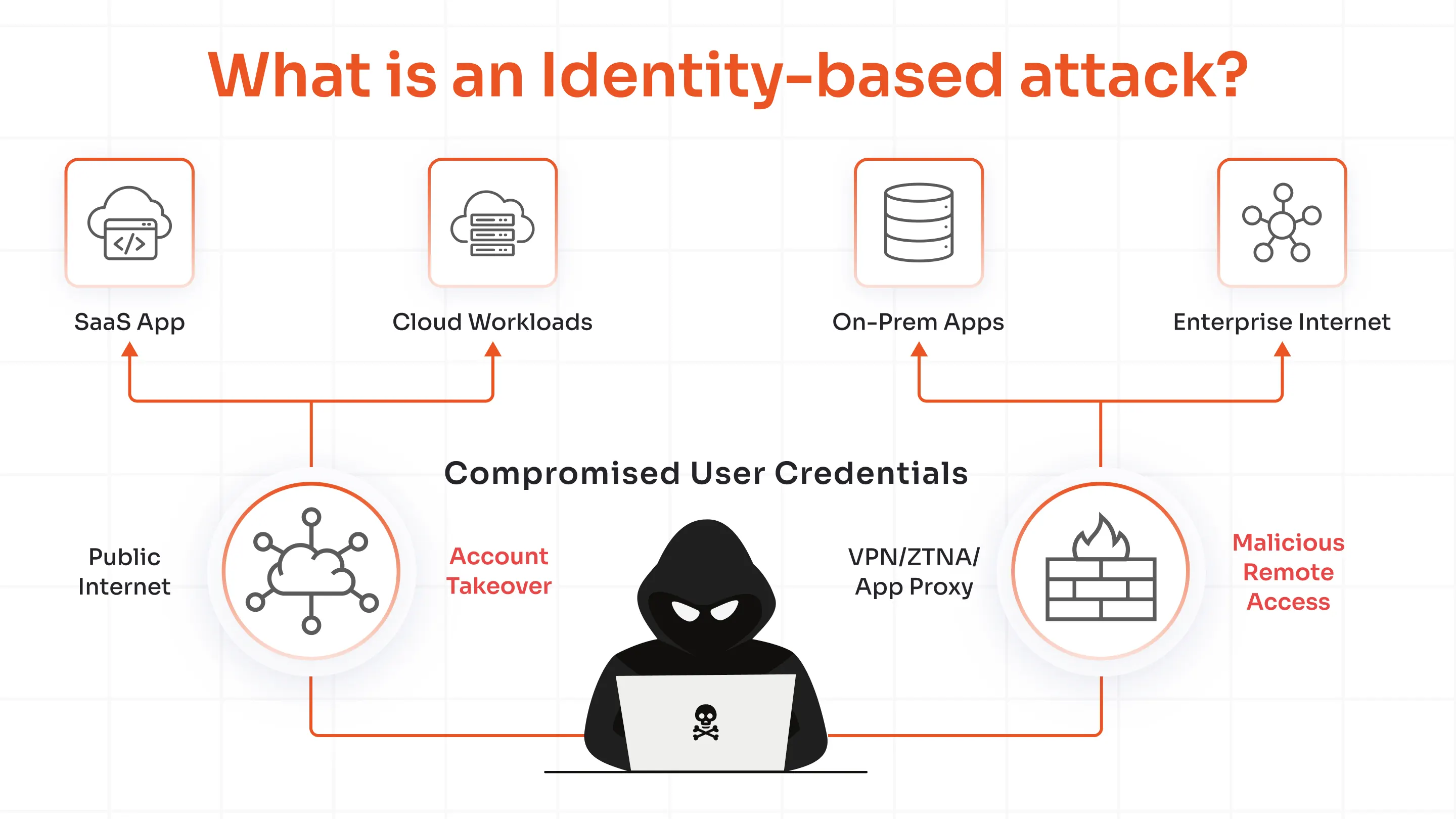In this blog, we will explore WebAuthn and its associated authentication concepts with miniOrange. We’ll go over the history of WebAuthn and help you better understand the benefits and challenges of using this standard of secure authentication. Through this WebAuthn informative blog, you’ll be able to fully define the concept and grasp how to incorporate it into your organization's security program and web applications.
What is WebAuthn?
WebAuthn, short for Web Authentication, represents a significant advancement in digital security by offering a passwordless authentication framework that effectively eliminates the need for traditional passwords. Developed by the FIDO Alliance and the World Wide Web Consortium (W3C), this standard allows for a more secure and streamlined login process across various platforms.
Unlike conventional security methods, WebAuthn introduces a robust multi-factor authentication (MFA) system that doesn't rely on passwords. Instead, it utilizes two distinct factors: "something you are" or "something you have." This typically involves combining biometric identification—such as a fingerprint or facial recognition—with a device that the user possesses, creating a dual layer of security that significantly enhances protection against unauthorized access.
WebAuthn's capability extends beyond biometrics; it also supports PIN authentication and software authenticators. These alternatives provide additional flexibility and security options, accommodating a broader range of user preferences and technological setups. By employing public-key cryptography, WebAuthn secures the registration, management, and authentication process. In this setup, the public key is shared openly for encryption, while the private key remains securely stored on the user's device for decryption, ensuring data remains safe even if intercepted.
Since becoming a W3C standard in March 2019, WebAuthn has been integrated into all major web browsers, including Google Chrome, Mozilla Firefox, Microsoft Edge, and Apple Safari. This widespread adoption underscores the effectiveness of WebAuthn in offering a more secure, passwordless authentication experience that's both user-friendly and resistant to phishing and other cyber threats.
As the digital landscape evolves, WebAuthn by FIDO2 stands out as a critical tool in enhancing online security, providing users with peace of mind while navigating various internet services, from banking to social media, without the vulnerabilities associated with traditional passwords.
Webauthn & its associated authentication concepts WebAuthn: Terms to Know, Understanding WebAuthn requires familiarity with key terms and acronyms that define its authentication framework. Here’s a breakdown of the essential concepts:
- FIDO (Fast Identity Online): FIDO is a security standard developed by the FIDO Alliance to eliminate traditional password-based authentication. It establishes a secure, passwordless authentication method using biometrics, security keys, or device-based authentication.
- FIDO2: FIDO2 expands upon the FIDO framework to enable seamless authentication on both mobile and desktop devices. It consists of two key components: WebAuthn (developed by the W3C) and CTAP (Client-to-Authenticator Protocol), which allow external authenticators to interact with devices.
- CTAP (Client-to-Authenticator Protocol): CTAP is a critical component of FIDO2 WebAuthn that enables external authenticators—such as security keys, smartphones, or biometric devices—to communicate with web applications and services via USB, NFC, or Bluetooth.
- CTAP1: CTAP1 defines the communication between browsers, operating systems, and hardware security keys for two-factor authentication (2FA). It was initially part of the U2F (Universal 2nd Factor) protocol and ensures stronger account security by requiring a second authentication factor beyond passwords.
- CTAP2: CTAP2 builds on CTAP1, enabling passwordless authentication and multi-factor authentication (MFA) by supporting more advanced security methods, such as biometrics and PIN-based authentication. It allows seamless communication between external authenticators and devices for a more user-friendly and secure experience.
- U2F (Universal 2nd Factor): U2F, also known as FIDO U2F, is a security standard that enables users to authenticate their online accounts using a second factor, such as a USB, NFC, or Bluetooth security key. It enhances security by making phishing attacks ineffective since authentication requires a physical device.
- MFA (Multi-Factor Authentication): MFA strengthens user authentication by requiring at least two verification factors using MFA Methods.
- Something you know (password)
- Something you have (security key or mobile device)
- Something you are (biometric authentication) WebAuthn inherently supports MFA by combining device authentication with biometric or PIN authentication for improved security.
- 2FA (Two-Factor Authentication): A subset of MFA, 2FA, Two-Factor Authentication requires exactly two factors to verify user identity. This is commonly seen in security implementations where users must provide a password (knowledge factor) and a security key or OTP (possession factor).
- UAF (Universal Authentication Framework): UAF, or FIDO UAF, enables passwordless authentication by allowing users to verify their identity using methods like biometrics, PIN authentication, or security keys. This framework ensures a seamless and secure authentication process without relying on traditional passwords.
Limitations of Current Authentication Methods
Despite the advent of innovative technologies like the WebAuthn FIDO 2 framework, password-based authentication continues to dominate as the primary method for user verification in online services. However, this system has several significant shortcomings:
- Vulnerability to Cyber Attacks: Passwords are frequent targets for cybercriminals employing tactics such as phishing scams, brute force attacks, and keystroke logging. These methods exploit the inherent weaknesses in password systems to steal user credentials.
- Weak Password Practices: Managing a plethora of passwords can be overwhelming for users, often leading them to opt for convenience over security. This results in the creation of simple, easily guessable passwords which further exacerbates their vulnerability to being compromised.
- Limited User Security Awareness: Many users lack the necessary awareness to identify and avoid phishing scams and other deceitful tactics designed to harvest credentials. This knowledge gap can lead to unintentional disclosure of sensitive information.
- High Management Overhead: Users are frequently burdened with the need to create and manage a large volume of password-protected accounts. This not only adds to the complexity of managing personal security but also increases the risk of security lapses due to fatigued attention to strict password protocols.
- Challenges with Certificate-Based Authentication: While certificate-based authentication offers an alternative to passwords, it is not without its challenges. The maintenance of the infrastructure required for certificate management can be complex and costly. Moreover, the security of the system heavily depends on safeguarding the private key associated with the certificate; if the key is compromised, so too is the security of all servers and applications that rely on that certificate for authentication.
Benefits of WebAuthn
WebAuthn represents a significant advancement in digital authentication, offering multiple benefits for both users and service providers. Here are some of the key advantages of adopting WebAuthn:
- Enhanced Security: WebAuthn fundamentally changes how user credentials are handled by ensuring that they never leave the device and are not stored on any server. This greatly minimizes the risk of phishing, password theft, and replay attacks, as the authentication happens locally on the user’s device using cryptographic proofs.
- Simplified User Experience: WebAuthn provides a smoother and faster sign-on process because users do not need to remember and enter passwords. Instead, they can use various authentication methods such as biometrics (fingerprints or facial recognition), security keys, or PINs. This flexibility not only enhances security but also improves convenience.
- Diverse Authentication Options: Users can authenticate their identity using a wide range of devices and methods, offering flexibility across different platforms and environments. Whether accessing services from a mobile device, laptop, or desktop, WebAuthn supports seamless authentication that is both secure and user-friendly.
- Reduced Password Burden: The passwordless nature of WebAuthn eliminates the need for users to remember and manage multiple passwords. This reduces the cognitive load and the security risks associated with weak password practices, frequent changes, and the use of the same password across multiple sites.
- Efficiency in Development: For product owners and developers, WebAuthn reduces the complexity and time required to implement secure registration and authentication systems. By leveraging the WebAuthn API, which is supported by major browsers and platforms, developers can integrate robust security features with fewer resources and less code.
- Lower Operational Costs: By diminishing reliance on password recovery and support systems, WebAuthn can lead to lower operational costs for businesses. The shift away from password-based systems reduces the need for extensive customer support related to password issues, such as resets and lockouts.
Challenges of WebAuthn
While WebAuthn offers significant advancements in digital authentication, it comes with its own set of challenges:
- Biometric Data Risks: If biometric data such as fingerprints or facial scans is compromised, unlike passwords, it cannot be changed, raising serious privacy and security concerns. Know more about biometric authentication.
- Device Dependency: Users must have their registered device or external authenticator on hand to access services. Loss or theft of the device can prevent access and may compromise security if it falls into the wrong hands.
- Limited Adoption: Not all platforms and services support WebAuthn, leading to inconsistent authentication experiences and continued reliance on passwords in some cases.
- User Familiarity: Transitioning from traditional passwords to biometric or device-based authentication can be challenging for some users, requiring efforts in education and adaptation.
- Complex Recovery: Recovering access after losing a device or security key can be more cumbersome than resetting a password, potentially locking users out of their accounts.
How WebAuthn Works: A Passwordless Authentication Journey
WebAuthn enables secure authentication by eliminating direct communication between users and servers, instead facilitating identity verification through browsers and devices.
The Core Mechanism
- WebAuthn leverages public-key cryptography, where the web application provides a public key, while the user’s device stores a private key (biometric or hardware-based).
- This process allows seamless authentication across cloud applications without requiring separate credentials for each service.
The 6-Step Authentication Process
- User initiates login via a WebAuthn-supported browser.
- The web server generates a unique challenge and sends it to the authenticator.
- Authenticator receives the challenge along with the website’s domain.
- User approves authentication using biometrics or a security key.
- Authenticator generates a cryptographic signature and returns it to the server.
- Web server verifies the signature and grants access.
Three Major Properties of WebAuthn for Secure Authentication
WebAuthn enhances secure digital authentication through three foundational properties: strong, scoped, and attested.
- Strong This property ensures the secure storage and management of private keys essential for encryption, facilitated by hardware security modules that protect against unauthorized access.
- Scoped Scoped authentication protects against phishing by ensuring that key pairs are generated from the genuine origin of the request, preventing them from being manipulated by malicious sources.
- Attested Attestation allows servers to verify the origin of a public key through a digital certificate provided by the authenticator, confirming that it comes from a trusted and legitimate source.
Conclusion
As we embrace a more secure digital landscape, adopting WebAuthn marks a significant step toward enhancing user experience and security across your organization's platforms. By eliminating traditional passwords, WebAuthn simplifies user access while significantly bolstering defense against cyber threats. miniOrange integrates seamlessly with WebAuthn to facilitate this transition, ensuring your security infrastructure is robust yet user-friendly. This strategic enhancement not only secures your data but also streamlines authentication processes, paving the way for a smoother, more secure digital interaction. For a deeper understanding of how this fits into broader security strategies, refer to our detailed blog on the IAM pillars, which further explores the integral components of identity and access management.
FAQs
1. What is the use of WebAuthn?
WebAuthn is used to enhance authentication security by enabling passwordless logins through biometrics, mobile devices, or FIDO security keys. It replaces traditional passwords with cryptographic credentials unique to each website, reducing the risk of phishing and credential reuse while improving user experience and security.
2. What is the difference between WebAuthn and a password?
WebAuthn replaces traditional passwords with cryptographic authentication, eliminating the need for stored credentials. Unlike passwords, which can be reused, stolen, or phished, WebAuthn uses public-key cryptography to verify users securely with biometrics, security keys, or mobile devices. This makes authentication more secure, phishing-resistant, and user-friendly.
3. Is WebAuthn safe?
Yes, WebAuthn is highly secure as it is part of the FIDO2 standard developed by the FIDO Alliance and W3C. It uses public key cryptography for authentication, eliminating the need for stored passwords that can be hacked. WebAuthn also prevents phishing, credential theft, and replay attacks, making it a robust and reliable authentication method.
4. What websites use WebAuthn?
WebAuthn is widely supported across major web browsers like Chrome, Safari, and Firefox, and works seamlessly on modern operating systems including Android, iOS, macOS, and Windows. Many websites and services, including tech giants, financial institutions, and enterprise platforms, have adopted WebAuthn to enable secure, passwordless authentication.
5. Who is using WebAuthn?
WebAuthn is widely adopted by major companies like Google, Facebook, and Microsoft, along with various online services and enterprise platforms. Most modern browsers, including Chrome, Firefox, Edge, and Safari, support WebAuthn, enabling secure, passwordless authentication across a broad range of websites and applications.




Leave a Comment